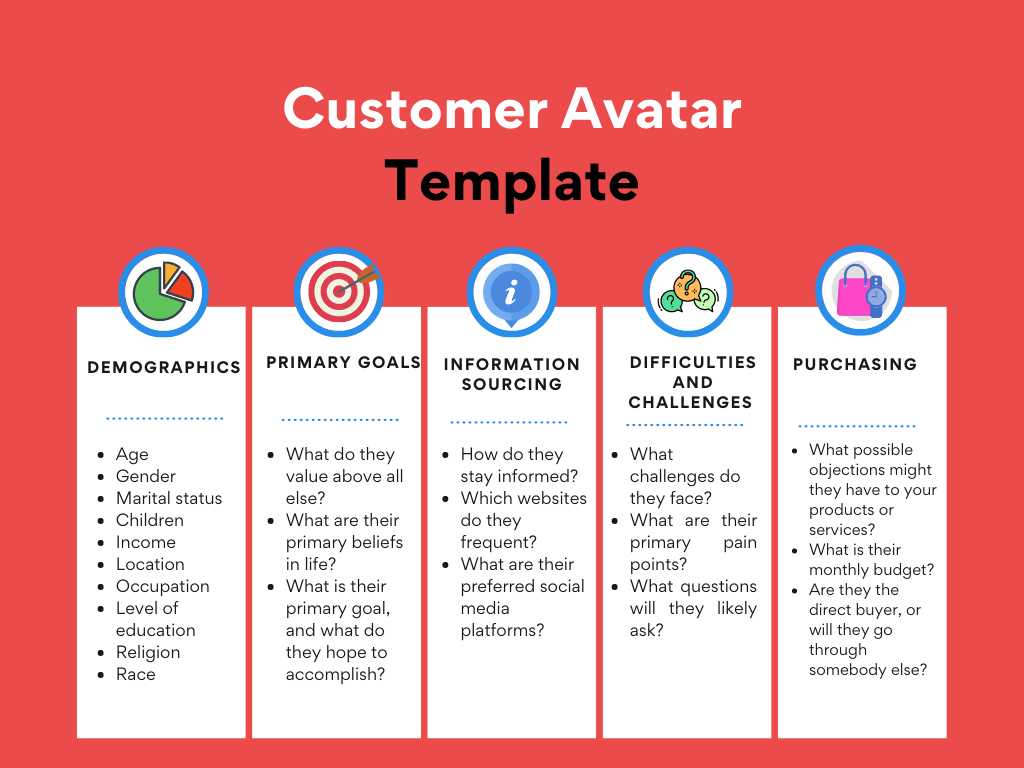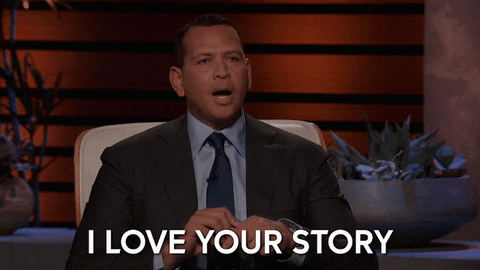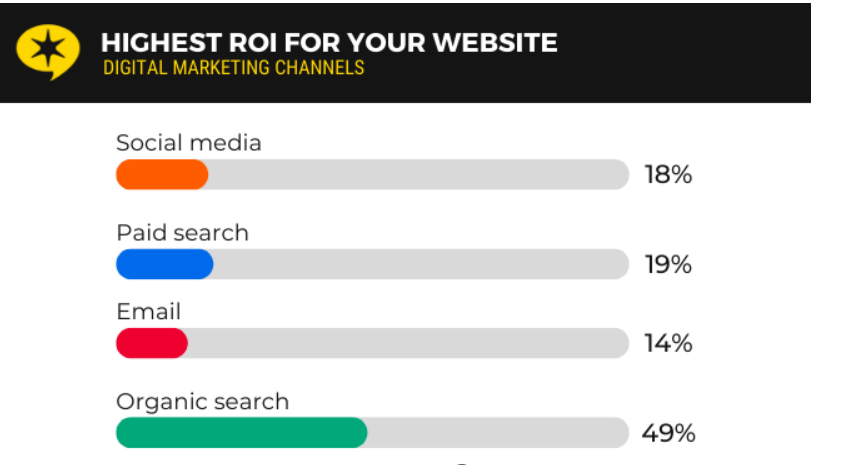Ever wonder why some Etsy products fly off the virtual shelves while others gather digital dust?
It’s not always about the product quality or price.
Often, it boils down to the words used to describe it. Yep, I’m talking about your Etsy product descriptions.
Think of your favorite online purchase. Now, think about why you bought it. Chances are, a killer product description nudged you a bit.
According to a study by Shotfarm, 39% of online shoppers have returned a purchase because it didn’t match its description. Yikes! That’s 3 out of every 10 customers.
And for a platform like Etsy, where the buyer can’t see or touch the product in person, your words matter even more.
So, if you’ve been skimping on writing Etsy descriptions, it’s time to rethink.
Dive in as I unpack how to write descriptions that don’t just inform, but sell.
Why Writing Great Etsy Descriptions is Important
Ever click on an Etsy product because of a captivating thumbnail, only to bounce back because the description was, well, meh? You’re not alone.
A survey revealed that 87% of online shoppers rank product descriptions as extremely important when deciding to buy. That’s almost 9 in 10 people!

Etsy, at its core, is a platform for unique, handcrafted, and personalized items.
Buyers aren’t there for the generic. They’re seeking something special. So, your product description shouldn’t just be an afterthought – it’s your golden ticket.
It’s the bridge that connects your craft to the buyer’s heart (and wallet).
And here’s the kicker: It’s not just about what the product is. It’s about how it fits into the buyer’s life, the problem it solves, and the joy it brings.
Now, I get it. Writing Etsy descriptions can feel like one more chore on an endless to-do list. But here’s a reality check: If your product description is a bland, generic rundown, you’re leaving money on the table. Period.
Understanding Your Etsy Audience
Here’s a hard truth: Not everyone’s going to love what you’re selling. But guess what? They don’t have to. Your goal isn’t to appeal to everyone; it’s to appeal to the right someone.
Alright, let’s get down to brass tacks. Who’s that ideal buyer? The one scrolling Etsy, wallet in hand, looking for exactly what you’ve got? Time for some detective work.
To nail “writing Etsy descriptions,” you gotta step into your buyer’s shoes. Visualize them. What’s their day like? What are their hobbies? Their dreams? Their pain points? And here’s the million-dollar question: How does your product slot into their narrative?
Do the groundwork. Dive deep into Etsy’s analytics, survey past customers, or analyze your competitors’ reviews. Figure out what’s making your target audience tick. Then, craft your descriptions with them in mind.
You can also form all of this information into a customer avatar to reference later.

And here’s a pro tip: Personal stories sell. If a product has a special origin story or is inspired by a unique experience, share it!
It’s those human touches that resonate most and bridge the gap between you and the potential buyer. But, more on that later.
Etsy Description Copywriting Strategies
Now, let’s get into the meat and potatoes of writing Etsy descriptions.
Be Detailed but Concise
Pop quiz: Would you read a novel-length description of a knitted scarf? Didn’t think so.
In a fast-paced digital world, less can often be more. But there’s a twist. While brevity’s king, you can’t skimp on the essentials.
It’s a fine dance between giving enough info and not putting your potential buyer to sleep.
A study by the NN Group found that 79% of online readers scan rather than read every word.
So, the trick? Hit them with the important details upfront, and make every word count. They’re not there for fluff; they want to know why your item’s the best.
Here’s your action plan:
- Lead with Benefits: Start with the biggest, boldest benefits of your product. Make them front and center.
- Bullet Points Are Your Best Friend: Love ’em or hate ’em, bullet points work wonders when it comes to “writing Etsy descriptions.” They’re scannable, digestible, and pack a punch.
- Ditch the Jargon: Not everyone knows industry lingo. Keep your language simple and relatable.
- Quality Over Quantity: Every sentence should serve a purpose. If it’s not informing or enticing, chop it.
Now, while you’re keeping things tight, don’t miss out on essential details. If there’s something unique about the material, the process, or the way it should be cared for, that’s gold. Put it in.
Like with all sales copy, test, tweak, and refine. Track your analytics, see what’s working, and be ready to pivot. What sounds perfect to you might not resonate with your audience.
Utilize Storytelling
Let’s spill some tea. Why do movies like ‘The Shawshank Redemption’ or books like ‘Harry Potter’ stick with us? Simple. They tell a compelling story.
Now, while you might not be the next Spielberg, your Etsy description has a story to tell. A story that, if done right, can turn casual browsers into die-hard fans.

According to OneSpot, storytelling can increase conversion rates by a mind-boggling 30%. Yeah, you read that right.
Just by including a story, you can potentially rake in 30% more sales. So, let’s break down how to infuse that idea into writing Etsy descriptions.
- The Origin Story: Where did the idea for your product come from? Was it a grandma’s secret recipe, a trip abroad, or just a lightbulb moment in the shower? Share it. People love to buy into histories and journeys, not just products.
- Evoke Emotion: Whether it’s nostalgia, joy, hope, or even a chuckle, emotions drive decisions. Paint a picture of a memory, a feeling, or a moment that your product encapsulates.
- The Hero’s Journey: Position your product as the solution. How does it save the day? Whether it’s making mornings easier, elevating fashion, or bringing smiles, make your product the hero buyers have been waiting for.
- Relatability is Key: Ensure your story isn’t just captivating but also relatable. If buyers can see themselves in it, you’ve hit the jackpot.
But here’s a pro-tip: Authenticity trumps all. Don’t spin tales just for the sake of it. If it’s not genuine, trust me, buyers will sniff it out. And nothing kills trust faster than insincerity.
Highlight Product Benefits
Alright, you’ve got this killer product, and you’re itching to tell the world about its dazzling features. But here’s the catch: while you’re geeking out over intricate details and specs, your potential buyer?
They’re asking one simple question: “What’s in it for me?”
Harvard Business Review dropped a truth bomb when they mentioned that customers don’t buy products; they buy the benefits those products offer. So, in the realm of “writing Etsy descriptions”, the name of the game? Benefits, benefits, benefits.
Here’s how to ace this:
- Feature vs. Benefit: Understand the difference. A feature is what your product has or does; a benefit is the value or positive outcome a customer gets. For instance, a “waterproof” watch is a feature, but “swim without a worry” is the benefit.
- Speak Their Language: Don’t just list benefits; tie them back to real-world scenarios. If you’re selling handcrafted candles, don’t just say they “last longer.” Paint a picture: “Enjoy a soothing ambiance night after night, without the constant need for a replacement.”
- Prioritize Top Benefits: While your product might have a laundry list of benefits, hone in on the top 2 or 3 that really make a difference. Highlight them big and bold.
- Answer the ‘So What?’: For every feature you list, ask yourself, “So what?” That’ll guide you to drill down to the true benefit.
A quick exercise? Pull up one of your current product listings. Scan the description. How many features vs. benefits do you see? If your description’s leaning heavy on the feature side, it might be time for a little revamp.
Maintain a Consistent Brand Voice
Listen up, because this one’s a game-changer. Ever met someone who’s all over the place, one minute cracking jokes and the next, dead serious? A little jarring, right?
Well, your brand voice is no different. Consistency isn’t just a nice-to-have; it’s the glue that holds your brand together and keeps buyers coming back for more.
Did you know, according to Lucidpress, consistent brand presentation across all platforms can increase revenue by up to 23%?
Yep, that brand voice of yours? It’s got some serious power when it comes to writing Etsy descriptions.
Let’s break it down:
- Define Your Voice: Are you quirky, professional, fun, nostalgic? Nail down 3-4 adjectives that best describe your brand. Keep them front and center every time you write.
- Your Brand’s Persona: Think of your brand as a person. What’s their vibe? Are they the knowledgeable professor, the fun-loving friend, or the wise sage? Tailor your descriptions to fit this persona.
- Consistency Across the Board: Your Etsy descriptions, social media posts, emails – every touchpoint should sound like it’s coming from the same brand. No split personalities allowed!
- Avoid the Copy-Paste Trap: While it’s tempting to reuse descriptions for similar products, tweak them to fit each item while keeping the brand voice intact.
- Regular Check-ins: As your brand evolves, so might your voice. Periodically revisit and ensure you’re still on track.
Now, for a quick reality check. Jump into your Etsy store, pick a couple of product descriptions, and give them a read. Do they sound like they’re coming from the same brand? If a stranger read them, would they instantly get your brand vibe?
Having a consistent brand voice isn’t just about sounding cool. It builds trust, sets expectations, and forms a bond with your audience.
Optimize for Search Engines
Now, I know what you’re thinking: “Carmine, this is Etsy, not Google.” But here’s a secret sauce moment: Etsy’s got its own search engine, and buddy, it’s hungry for some optimization.
Without some savvy SEO tactics when writing Etsy descriptions, you’re basically shouting into the void.
In fact, 49% of marketers agree that organic search has the greatest return on investment (ROI). So, if you’re not optimizing, you’re basically leaving a huge chunk of potential sales on the table.

Let’s gear up:
- Keyword Research: Dive into tools like SEMrush. Discover what potential buyers are typing into that search bar. Those are the terms you want to sprinkle into your descriptions.
- Naturally Integrate Keywords: While it’s tempting to stuff every keyword into a description, resist. Your description should read naturally. Remember, you’re writing for humans first, algorithms second.
- Title Optimization: Your product title isn’t just a label; it’s prime SEO real estate. Front-load it with your most important keyword.
- Tags and Categories: Don’t ignore them! They’re your secondary arsenal in the SEO game. Again, think like a buyer. What tags and categories would they use to find your product?
- Stay Updated: Just like Google, Etsy’s algorithm isn’t set in stone. It evolves. Keep an eye out for changes and be ready to tweak your strategy.
With your Etsy copywriting, don’t just set and forget. Dive into your Etsy shop stats regularly. See which keywords are driving traffic. Double down on what’s working and rethink what isn’t.
With a bit of research, some strategic tweaks, and patience, you’ll watch your shop climb the ranks and acquire more customers.
Common Mistakes to Avoid When Writing Etsy Descriptions
Alright, let’s flip the script for a moment. While mastering the art of writing Etsy descriptions is all well and good, knowing what not to do? Equally crucial.
The road to Etsy success is littered with common pitfalls, and avoiding them? It’s your fast-track ticket to standing out and cashing in.
- Being Too Vague: “It’s great” or “High-quality” won’t cut it. Buyers want specifics.
- Ignoring the Mobile Crowd: Most web traffic comes from mobile. If your descriptions are a mess on smaller screens, you’re losing out big time.
- Neglecting the FAQ: If buyers commonly ask the same questions about your product, they should probably be in your description. Save them (and yourself) the time.
- Overhyping: There’s a fine line between selling your product and over-promising. The latter can lead to returns, bad reviews, and a tarnished reputation.
- Ignoring SEO: We hammered on this earlier, but it’s worth repeating. If you’re not optimizing for search, you’re missing out on a heap of potential eyeballs.
- Lack of Proofreading: Typos, grammar mistakes, or just plain sloppy writing can erode trust fast. Always give your descriptions a once-over, or better yet, get a second pair of eyes.
Final Thoughts on Writing Etsy Descriptions
If you run an Etsy store, it’s crucial that you learn how to write descriptions that grab customer’s attention and convert them. Otherwise, you can drive all of the traffic you want, but you won’t generate any sales.
Here’s a recap of today’s article:
- Understand your audience by researching their dreams, challenges, and desires.
- Be detailed but concise. Remove any fluff, and don’t write any more than required.
- Add stories that relate to the production or use of the product.
- Highlight the deeper benefit of using the product, not just the features.
- Maintain a consistent brand voice throughout your entire store and other assets like social media pages.
- Target keywords and optimize for search engines to generate organic traffic.
Want to learn more about copywriting? Get mentorship from me and enroll in my copywriting courses.














